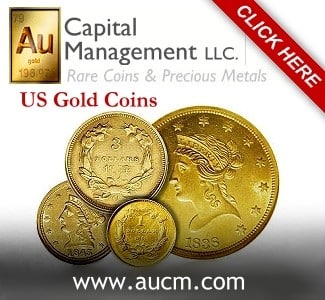By Jack D. Young, Early American Coppers (EAC) ……
It has been a while since I wrote my CoinWeek article on the “family” of large cent counterfeits based on the 1833 N-5 variety, but I have since found the time to discuss another of the “family” type that I call the “beaded” border counterfeit based on the 1814 Classic Head S-295 variety.
As I noted previously, I consider this type of counterfeit an intermediate level of deceptive “type”. It can certainly fool collectors unfamiliar with the series.
These struck fakes are available in several different denominations and varieties and are fairly accurate as compared to the source coins. But the counterfeiters use the same layout and change the date to create a family of fakes, resulting in impossible die combinations/states. These take a higher level of knowledge to discern, with being savvy about the series and variety attributions part of the best defense.
The subject coin for this article is an 1812 Classic Head Large Cent a friend posted in a coin forum and sent to me for an in-hand review:
As I have stated in my previous articles and my CoinWeek “Dark Corner” series, one should always start a coin review by ATTRIBUTING the subject example. For the 1812 there are four different documented varieties, but unfortunately, this isn’t one! Date position and spacing do not match any, though the S-290 is the closest.
But it does appear to closely match the 1814 S-295!
Continued researching resulted in finding several other “dates” with the same “beaded border” obverse and the same reverse; the borders for the genuine coins are denticles, but shifting of the strike can make the more rounded tips to look like “beads” – as shown on all of these fakes.
Comparing the “1814” from the group to a genuine 1814 S-295 shows how close this one is:
And the reverse:
One of the common “die markers” for these is the damage on the “N” of UNITED:
The genuine source coin must have been damaged there and passed that along to the rest of the “family”!
And on the obverse there are “die chips”, with a prominent one to the left of the nose:
As I have previously stated in other articles, one of the best ways to protect yourself from this type of fake for sale is to learn the series yourself. Buy the reference books, join a discussion group or club focused on your interests–such as Early American Coppers (EAC)–and ask other experienced members and friends. And review similar items on the internet: major auction house sales archives and NGC’s and PCGS’s variety pages are great online resources.
And a recent source of quick information on these and other struck counterfeits can be viewed on CoinWeek, where the entire series of research articles can be accessed.
The research and summary articles continue to be a collaborative effort, with many EAC members and “Dark Side” friends participating and contributing!
Best as always,
–Jack
MORE Articles on Counterfeit Coins by Jack D. Young

It’s a shame that with everything going on in life you got to deal with people like this I do not understand there’s one thing for sure though you can’t buy your way into heaven!!!